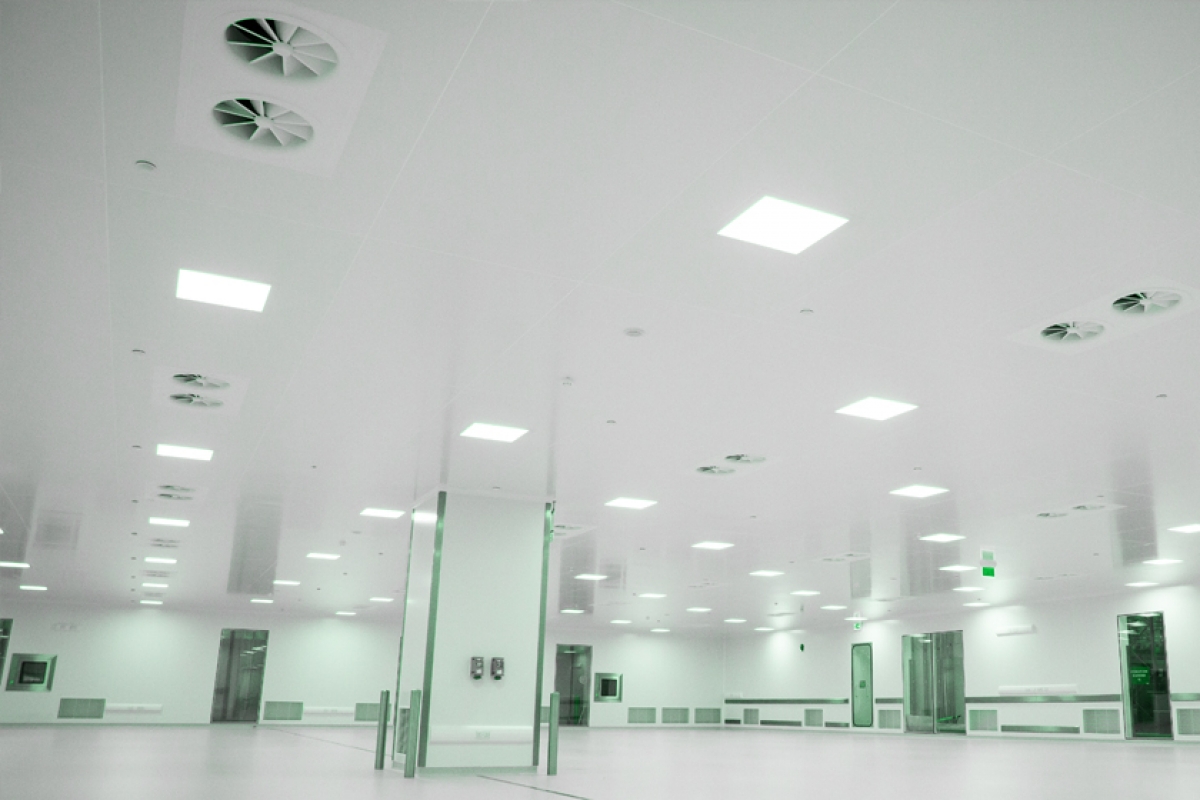
HVAC vs conventional systems
Clean room design encompasses much more than traditional temperature and humidity control. Design must consider aspects such as control of particulate, microbial, electrostatic discharge, gaseous contaminants, airflow pattern control, and pressurization and industrial engineering
The primary design goal of clean room is the particulate control
The size of these particles ranges from 0.001 to several hundred microns. Particles of different sizes behave differently as air moves through a room. For example, in an eight-foot high room, a particle in the 50-micron range might take 60 seconds to settle, while a 1-micron particle might take 15 hours to settle. Particles larger than 5 microns tend to settle quickly unless air blown.
A clean room differs from an ordinary ventilated/conditioned room mainly in three ways.
- Increased air supply: The increased air supply is an important aspect of particle control. Normal air-conditioning systems are designed for 0.5 to 2 air changes per hour essentially based on the occupancy level or as determined from the building exhaust levels. A clean room would have at least 10 air changes per hour and could be as high as 600 for absolute cleanliness. The large air supply is mainly provided to eliminate the settling of the particulate and dilute contamination produced in the room to an acceptable concentration level.
- The use of high efficiency filters: High efficiency filters are used to filter the supply air into a clean room to ensure the removal of small particles. The high efficiency filters used in clean rooms are installed at the point of air discharge into the room. Room pressurization is mainly provided to ensure that untreated air does not pass from dirtier adjacent areas into the clean room.
- Room pressurization: The clean room is positively pressurized with respect to the adjacent areas. This is done by supplying more air and extracting less air from the room than is supplied to it.
The greatest concern is that the actual particle deposits on the product, which can spoil it. Before any methods of contamination control of airborne particles can be applied, a decision must be made as to how critical this particulate matter is to the process or product. This is done by classification of room to requisite class level.
There is much more than above for instance the type of filtration, efficiency, airflow distribution and patterns, amount of pressurization, redundancy, noise issues and etc.
Resources & Articles
CLIN ® "Resources" page is for individuals/companies seeking information on cleanrooms and controlled environments. Find Cleanroom News, Discussion Forums, Cleanroom Cleaning Recommendations, Cleanroom Terminology, Cleanroom Directory, and more.
Content Disclaimer
Information are contributed by/from different websites and all credit goes to its respective owners/writers/websites/companies and etc, and while we endeavour to keep the information up to date and correct, we make no representations or warranties of any kind, express or implied, about the completeness, accuracy, reliability, suitability or availability with respect to the website or the information, products, services, or related graphics contained on the website for any purpose. Any reliance you place on such information is therefore strictly at your own risk.
In no event will we be liable for any loss or damage including without limitation, indirect or consequential loss or damage, or any loss or damage whatsoever arising from loss of data or profits arising out of, or in connection with, the use of this website.
Through this website you are able to link to other websites which are not under the control of respective owners/writers/websites/companies and etc. We have no control over the nature, content and availability of those sites. The inclusion of any links does not necessarily imply a recommendation or endorse the views expressed within them.
Every effort is made to keep the website up and running smoothly. However, CLIN ® takes no responsibility for, and will not be liable for, the website being temporarily unavailable due to technical issues beyond our control.











